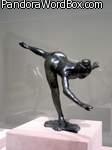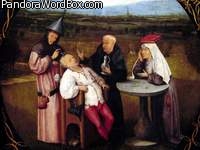Our websites offer information mostly for educational purposes with no intent to alter health care protocols nor to serve as a sole source of medical information.
Always seek the advice of your local health care provider.
|
× UKRAINIAN CHILDREN WITH DISABILITIES HAVE SPECIAL NEEDS |
HIP COXA PELVIS THIGH THUMB
Girdle Muscle Musculature
Butt Buttock Gluteus Coitus
Ambulation Ambulance Ambulatory Limp Hobble
The focus of this overview is on the ideas inherent in HIP - THIGH - THUMB - HYPE - HIPSTER - HIPPIE - FEMUR - FOOT, as a functional unit allowing humans to walk or be bi-podal deambulating animals. Other overviews expose the sexual implications of curvateous hips and thighs as well as connections of curve with incline, decline, clinic and beyond.
The functional oneness of the human HIP - BUTTOCK - PELVIC GIRDLE - THIGH - FOOT is essential to achieve BIPED or BIPODAL AMBULATION. Such requires a strong and balanced musculature anchoring the spine and pelvis or hips and buttocks with the leg or femur - leg and foot. In Spanish, the functional oneness of the HIP - THIGH - FOOT are underscored by the terms PERNIL - PIERNA - PIE. The link of the above with strong balanced MUSCULATURE - thigh in Spanish is MUSLO and in either laguage, the idea extends to MASCULINITY. When a human "pernil" fails, deAMBULation may cease and use of an AMBULance or wheelchair may be required.
In medical parlance, hip is COXA or more precisely the hip joint or ARTiculation that ARTiculates the pelvis with the THICK muscular THIGH. The thigh is sustained by the longest human tubular bone or FEMUR secured by a massive muscle known as quadriceps - FEMUR also evokes notions of FEMALE - FEMININE - FAMILY.
Anteriorly, the hip blends with the ABDOMEN and PUBIC region, poetically known as the VENERable Mons VENEReus. Posteriorly, the hip is continuous with the BUTT, BUTTOCK or BOTTOM also known as GLUTEAL area, NALGAS in Spanish or NATICA in Latin which open vistas toward NATAL - NATIVITY - NEONATE.
The core idea in HIP or COXA is PROMINENCE. HIP can be used to describe those who are skilled, advanced and in essence are FORWARD looking or PROMINENT as HIPSTERS and HIPPIES tried to be.
In biology, HIP refers to the lateral prominence of the body between the waist and the thigh. HIP has links with HEAP as well as with HOOK, HEEL, BEND and therefore with CURVE. The roots in COXA are clear - in Greek, KOKKYX refers to the CURVED beak of the CUCKOO bird, a similar shape to that of the human tail bone or COXIS and reminiscent of the angular nature of COXAE or hips.
Malformations and deformations of the COXA are common. Particularly noxious is a hip dislocation or luxation, a common "birth defect" (a non-medical populist term coined for the March of Dimes by public relations specialists) Infants must be screened for hip defects so that they can be treated promptly to prevent a LIMP or HOBBLE. Note that milder forms of hip displasia may be missed during the neonatal examination (the skills of clinicians to perform physical examinations is in rapid decline in part due to the medical training increasing control by non-MDs "medical educators"). Persons with milder froms of hip dysplasia, particularly girls, may remain undetected until hip pain or COXALGIA and signs of COXITIS and COXO-ARTHRITIS become intolerable. A growing number of orthopedists are convinced that younger patients, in particular women, who require hip replacements represent instances of hip displasia undiagnosed at birth, when such disorders can be easily and effectively prevented by early interventions. When a HIP or in Spanish CADERA fails, the result may be a CATAstrophic CAIDA or dawnFALL.
The Greeks combined CATA for "fallen" with HEDRA for "chair" to coin CATHERGA for BUTTOCK as if to stress that Europeans like to "sit on their butt". In fact, CATHEDRA denotes a special chair or throne for Doctors, selected as Bishops of a CATHEDRAL, or for "Chairmen" of academic departments.
The relationship of HIP dysfunction with HOBBLE is obvious and it refers to a "back and forth" swaying motion or LIMPING. Walking also induces hip GIRAtions which if exagerated by women or street walkers gives rise to the Spanish term GIRA for prostitute (in Ukrainian the term is CURVA which also points to the CURVAteous nature of feminine hips or RUMP). Furthermore, in Spanish, COJO means LIMPING while COJER means COITUS - the connection has to do with "back and forth" motion. The complex HIP-GIRA-GIRATION extends doward JIG, JOG, JIGGLE, JIB, GIGUE, JIGGLE, JIGSAW as well as to GIGOLLO, GIGGLE, WIGGLE, and FIDDLE. More can be found in companion overviews.
HIP and HAUNCH point to BUTT, BUTTOCK or GLUTEAL muscles which enable a person to sit or to HUNCH and HUNKER or SQUAT. Furthermore, GLUTEAL muscles contribute to the prominence of BUTTOCKS or NATICA in Latin which links with NATALITY. Note that in some cultures, women about to deliver, do so in SQUATTING positions.
Mentioned above is that HIP implies "prominence". Another term, applicable mostly to the spine is HUNCH - a source of legends that rubbing a HUNCH or GIBBUS may bring good luck. It is relevant to note that those with a HUNCH or HUNCHbacks, often are "little people" or "dwars" who being small may find and share their knowledge of secret places. What is the difference of rubbing a HUNCH or HAUNCH deserves consideration.
There are other dimensions of the HIP-THIGH panorama not given above - some of these are found in companion overviews shown in the left column.
20101029 ww















